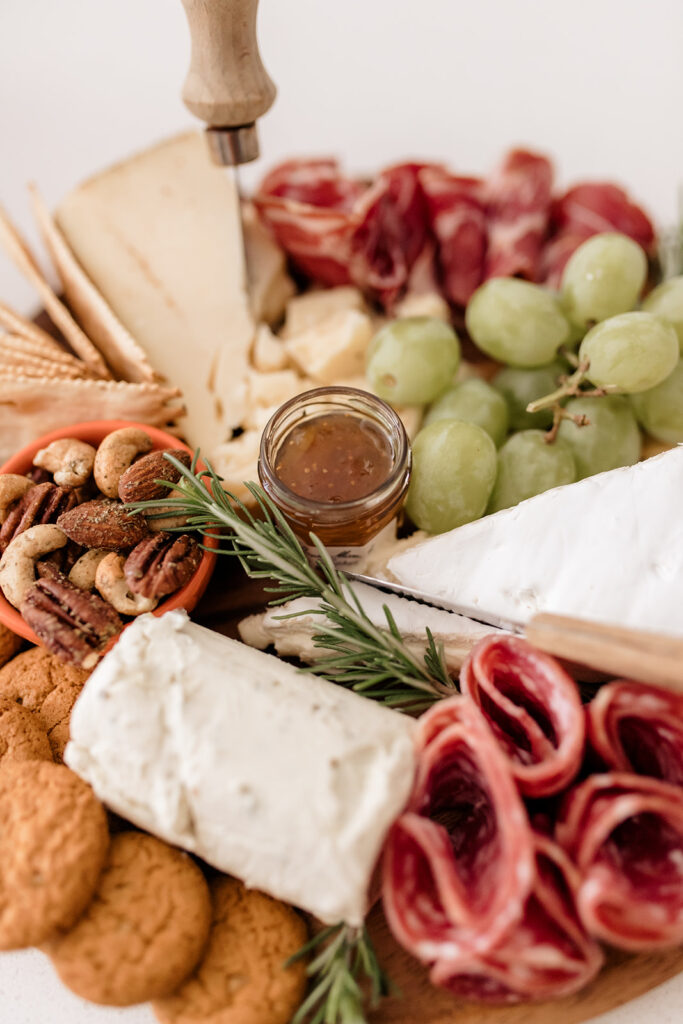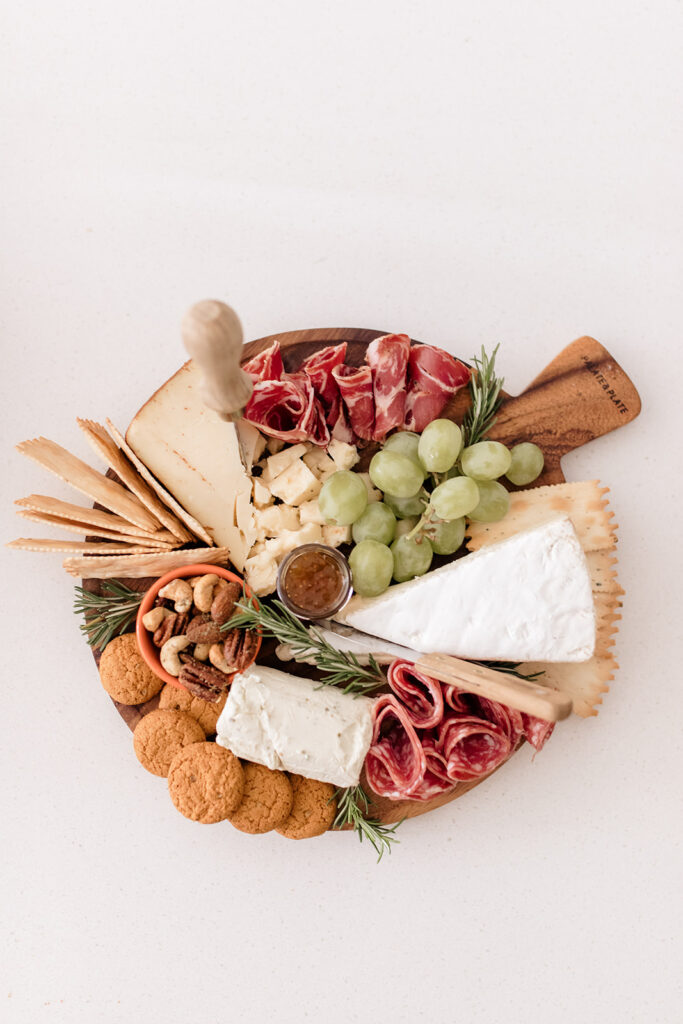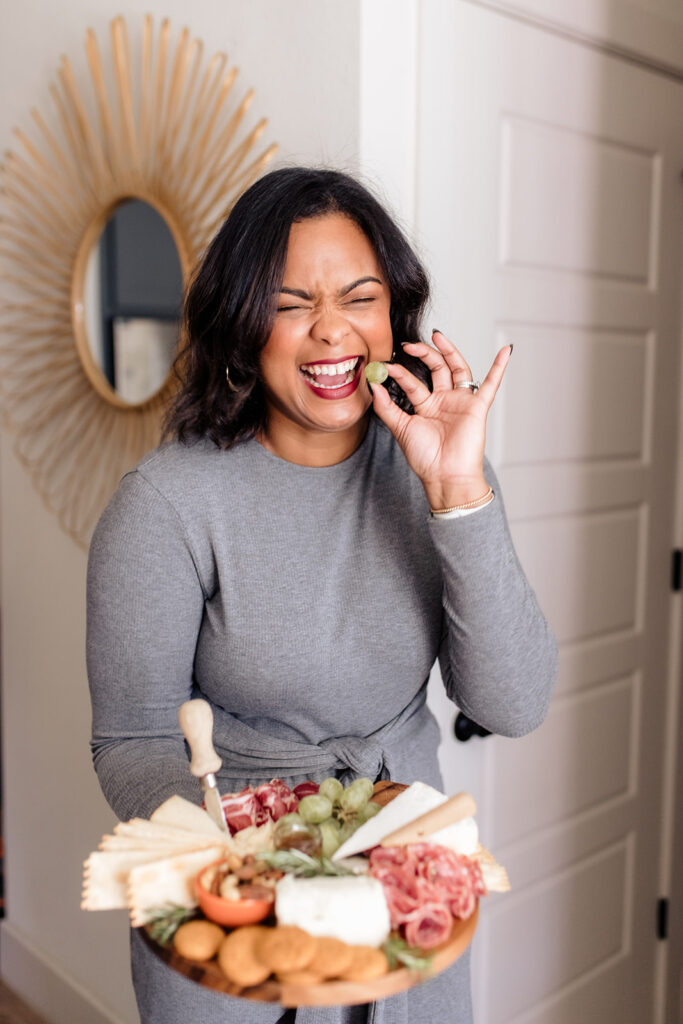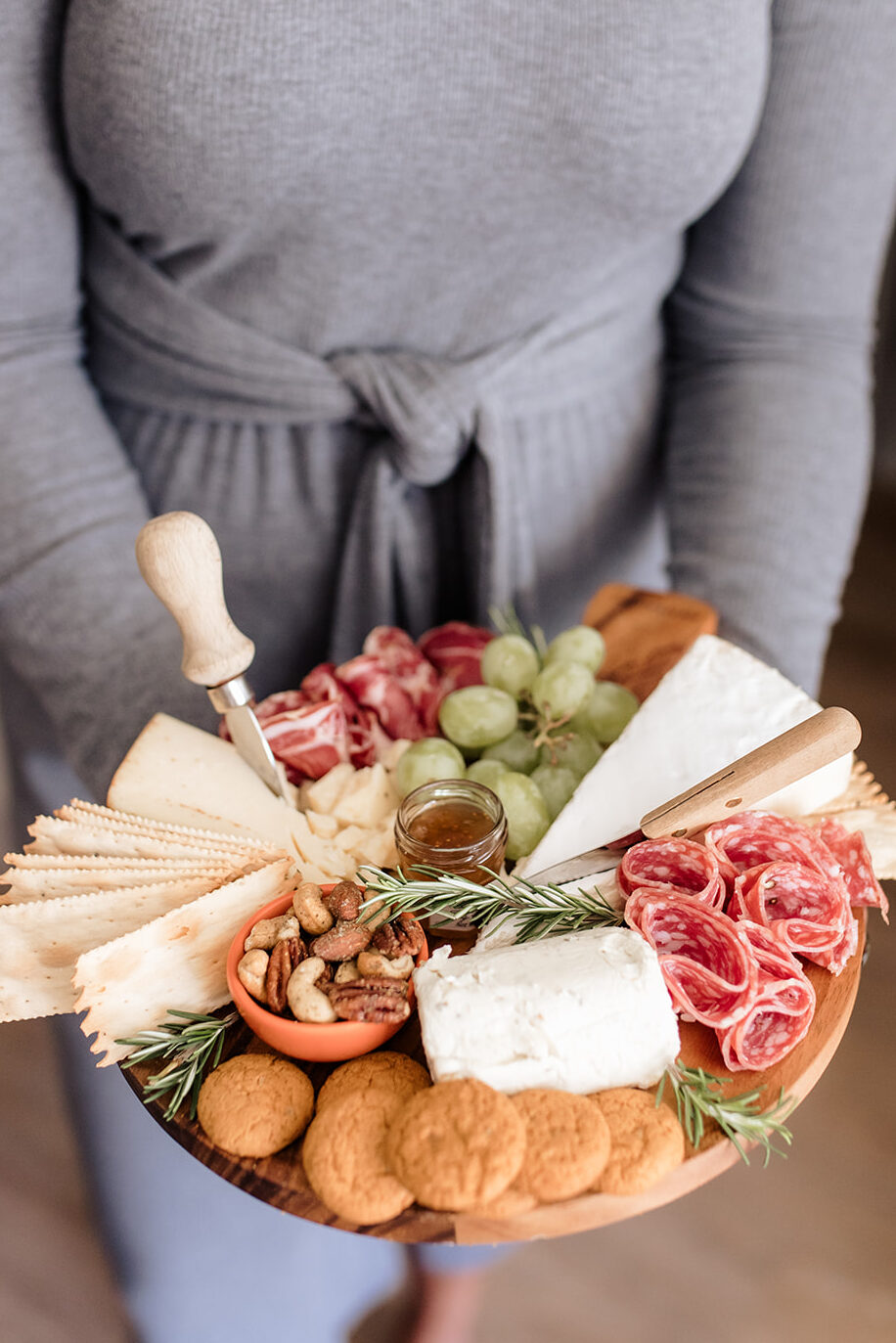Crafting the Perfect Charcuterie Board (With Wine Pairings)
If you’re here, chances are you’ve got a gathering on the horizon — and nothing sets the mood quite like a beautifully crafted charcuterie board paired with the perfect glass of wine. Charcuterie boards have exploded in popularity over the last few years, not only because they’re delicious and customizable, but also because they make you look like the host who has it all together.
As someone who is known for always showing up with a well-packed board (and the wine to match!), I’ve learned a few tried-and-true tricks to make any spread stand out. Today, I’m sharing my 5-point checklist for building the ultimate charcuterie board, plus my favorite wine pairings to help your flavors shine. Whether you’re hosting a casual girls’ night, a holiday party, or a cozy date night in, this guide will have you covered.

Step 1: Balance and Variety — The Foundation of Every Great Board
A charcuterie board is essentially a symphony of flavors and textures. The trick is in the balance. You don’t want a plate that’s only cheese, only meat, or only crackers — you want a mix that invites guests to experiment and combine bites in new ways.
Here’s a basic formula I like to follow:
- Cheeses: Always include at least one soft (like brie or goat cheese), one semi-hard (like manchego or gouda), and one bold option (like blue cheese or aged cheddar).
- Meats: Prosciutto, salami, soppressata, and even chorizo are crowd-pleasers. Fold or roll them for visual appeal.
- Crunch factor: Crackers, crostini, and yes… even ginger snaps. Trust me — pair one with goat cheese, and your taste buds will be dancing.
Wine pairing tip:
- Soft cheeses like brie pair beautifully with Champagne or sparkling wine.
- Bold cheeses like blue cheese balance nicely with dessert wines like port or a sweet Riesling.
Cured meats? A classic Pinot Noir or Cabernet Sauvignon always wins.

Step 2: Presentation and Arrangement — Because We Eat With Our Eyes
A charcuterie board should feel like art. Don’t just toss things onto a plate — think about shapes, colors, and textures.
- Start with the cheeses: Place them at different points on your board to create balance. Cut some into slices or cubes for easy grabbing, but leave others whole for that rustic look.
- Add the meats: Fan or fold slices for texture and volume.
- Fill in with crackers, fruit, and accompaniments: Use these to create flow and fill negative space.
And here’s the secret: you don’t need a fancy wooden board. Any platter or large plate works perfectly. For easy cleanup, I like to line mine with parchment paper before layering the goods.
Wine pairing tip:
The more visually colorful your board, the more variety you’ll have in flavor. Think about pairing by contrast: salty meats with crisp whites, creamy cheeses with acidic reds. A Sauvignon Blanc cuts through fatty meats beautifully, while a buttery Chardonnay enhances mild cheeses like havarti.

Step 3: Accompaniments — The Unsung Heroes
Cheese and meat may be the stars, but accompaniments are the secret weapon. They provide those surprising pops of sweetness, acidity, or crunch that make a board unforgettable.
Some of my favorites:
- Fruits: Grapes, figs, sliced pears, dried apricots.
- Pickled & savory: Cornichons, olives, marinated artichokes.
- Jams & spreads: Tomato jam, pepper jelly, honey — don’t limit yourself to sweet spreads only!
- Nuts: Almonds, walnuts, or candied pecans for crunch.
Wine pairing tip:
- Sweet accompaniments like figs or honey pair beautifully with dessert wines.
- Pickled items love a crisp white, like a dry Riesling or Sauvignon Blanc.
- Spicy or pepper jellies? Pair them with a chilled rosé to balance the heat.

Step 4: Texture and Temperature — The Details That Matter
Texture is what keeps every bite exciting. A creamy brie, a crunchy cracker, a juicy grape — when layered together, it’s a party for your palate.
Temperature also matters more than most people think:
- Soft cheeses should be served at room temperature so their flavors bloom.
- Hard cheeses can hold up better chilled, but still benefit from sitting out a bit before serving.
- Meats taste best when not ice-cold, so let them sit out for 10–15 minutes before guests arrive.
Wine pairing tip:
- Serving a rich, creamy cheese? Reach for a high-acid wine like Champagne or Sauvignon Blanc to cut through the fat.
Serving harder, aged cheeses? A bold Cabernet Sauvignon or Zinfandel provides just the right balance.

Step 5: Garnishes and Herbs — The Finishing Touch
Think of garnishes as the accessories that complete an outfit. They may not be the main event, but they take everything to the next level.
I love adding:
- Fresh rosemary sprigs (bonus: they smell amazing)
- Basil or thyme tucked between clusters
- Edible flowers for a seasonal or whimsical touch
Not only do garnishes elevate the look of your board, but they also add subtle aromatics that can change the entire experience.
Wine pairing tip:
Herbal garnishes often echo the notes in wine. A Sauvignon Blanc has grassy, herbal notes that pair beautifully with fresh basil, while rosemary complements earthy red wines like Syrah or Cabernet Franc.
Bonus Hosting Tip: Go Big With Butcher Pape
Hosting a large group? Forget the board entirely! Roll out a sheet of butcher paper across your table or kitchen island, and build your spread right on top. Not only does this make cleanup a breeze, but you can also write pairing notes directly on the paper with a marker. Guests will love the interactive element — and it turns your spread into a centerpiece for conversation.
Wrapping It Up
A charcuterie board is more than just cheese and crackers — it’s an experience. By paying attention to balance, presentation, accompaniments, textures, and those finishing touches, you’ll create something that feels abundant, approachable, and downright irresistible. Add the right wine pairings, and you’ve officially leveled up from “host” to “curator of memories.”
The beauty of charcuterie is that there are no strict rules. You can be playful (ginger snaps, anyone?), you can be seasonal, and you can be as simple or elaborate as you like.
So the next time you’re planning a gathering, ask yourself: Which tip am I going to try first? And tell me in the comments — what’s your favorite, must-have addition to a charcuterie board?